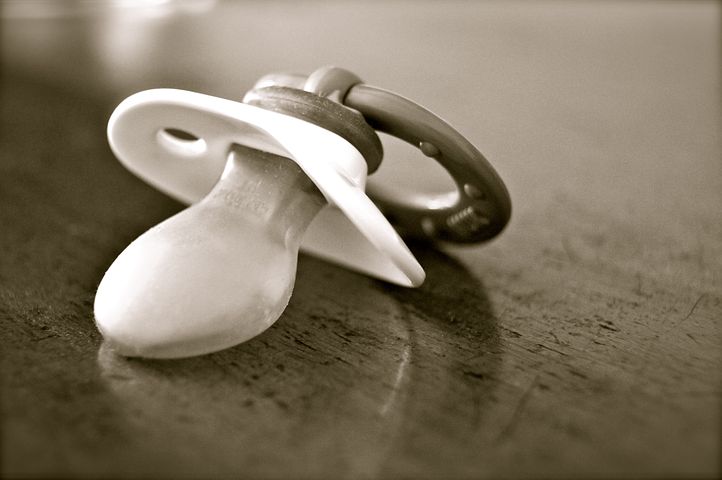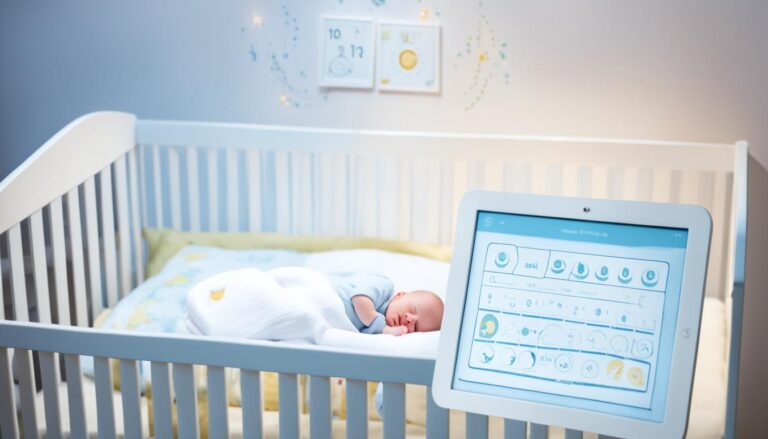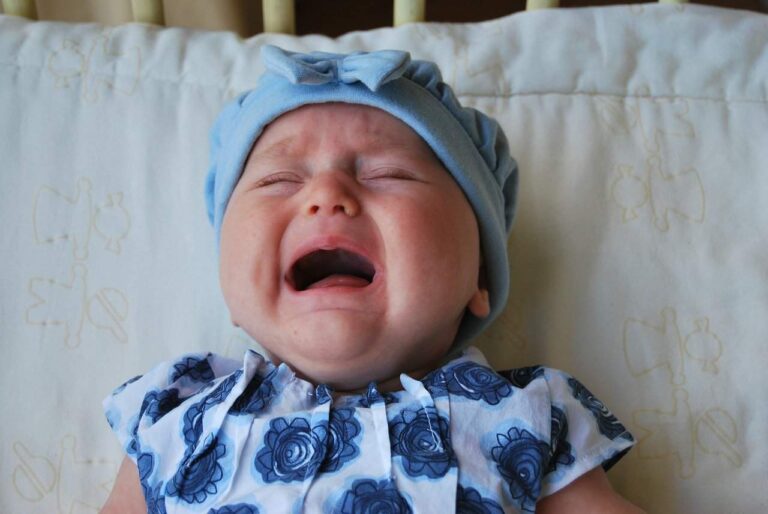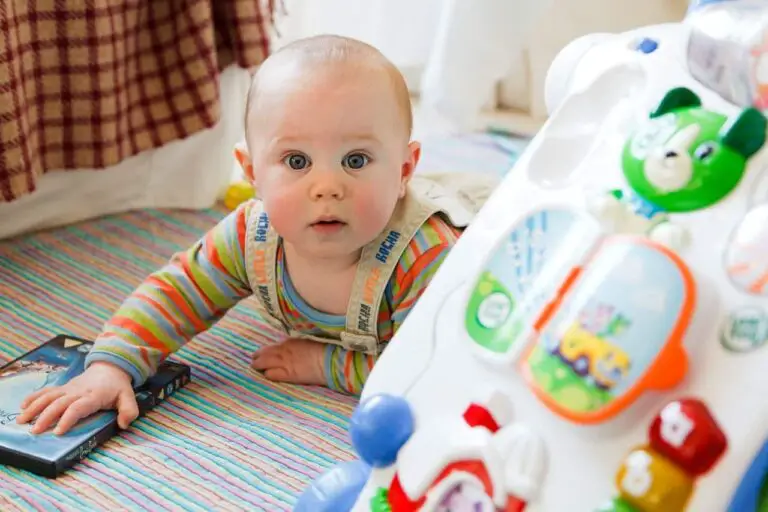How To Get Baby To Sleep Without Pacifier And Sleep Better
If you are wondering how to get baby to sleep without a pacifier, then you are in the right place. The Pacifier is an essential sleep aid that most babies need before they can soothe themselves to sleep.
And while some parents avoid using this tool on their baby, it’s highly commendable for babies, though up to a certain age. You don’t want your child growing up to be a pacifier addict who ends up being a social pariah.
That said, a pacifier is still a great sleeping aid for newborn babies alongside white noise, swaddling. Below are some of the benefits of a pacifier to newborn babies.
Skip To The Following Sections
- Benefits of Pacifiers to Newborn Babies
- Teaching Your Baby to Self-Soothe Without the Pacifier
- When Do Babies Start to Self-Soothe?
- Tips for Helping Your Baby to Self-Soothe
- Sleep Training Baby with Pacifier
- How to Keep Pacifier in Baby’s Mouth at Night
- How to Wean Baby off Pacifier in 4 Months
- Gradual Pacifier Weaning Techniques
- Sleep Regression After Taking Away Pacifier
- Alternative Soothing Techniques for Baby
- Nighttime Strategies for Pacifier Use
- Understanding Comfort Nursing and Pacifier Use
- Coping with Baby’s Nighttime Waking for Pacifier
- Encouraging Independent Sleep
- Conclusion
Benefits of Pacifiers to Newborn Babies
1. Reduces the risk of SIDS
According to research, pacifiers reduce the risk of Sudden Infant Death Syndrome (SIDS). SIDS is one of the most common causes of death in newborns, and the fact that a pacifier helps reduce this risk is a good thing.
- Effective Soothers
Pacifiers are immensely useful soothers, especially when combined with other forms of sleeping aids, such as swaddling and white noise. They can significantly improve your baby’s sleep while reducing the crying as well.
- Boob Break from Breastfeeding
Although previous research found that pacifiers negatively impact breastfeeding in newborns, a recent study found otherwise. According to this new research, pacifiers are adequate substitutes for breastfeeding while giving Mum’s boob the needed time to rest.
Moreover, this is when Dad can step in and enjoy some quality bonding time with their newborn.
- Helps to Reflux the Baby
When your infant sucks on a pacifier, they tend to produce more saliva, which is considered a natural antacid. Therefore, this ends up being very useful for refluxing babies.
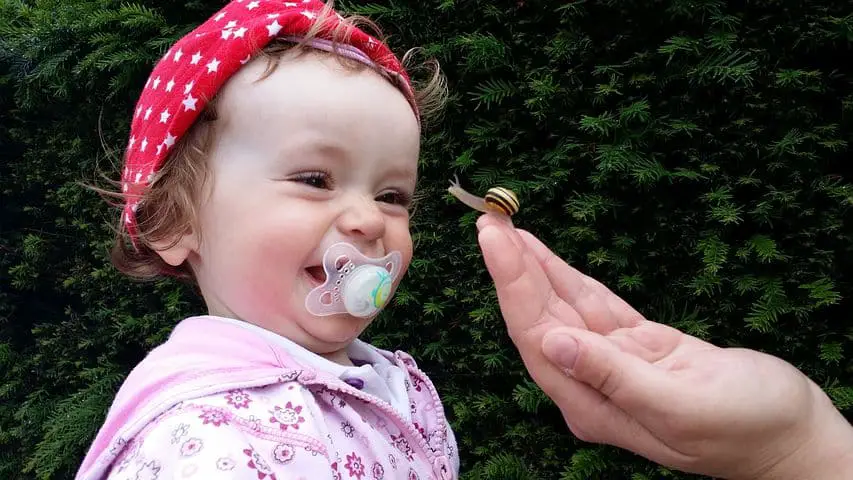
Teaching Your Baby to Self-Soothe Without the Pacifier
Self-soothing is your baby’s ability to calm down and sleep by themselves without needing any help from you, the Pacifier, or any other sleeping aid. In most cases, self-soothing in babies is mostly associated with routine bedtimes.
If you have a natural self-soother, they usually don’t need your help or a pacifier for them to sleep. As for babies who aren’t yet self-soothers, their parents can have difficulty putting them down.
And even though a pacifier is useful in such a scenario, it isn’t advisable to use it excessively. Helping your infant calm down on their own makes both playtime and bedtime easier, which gives you a break to perform other duties.
The question of how to get a baby to sleep without a Pacifier depends on several factors. And your baby’s temperament has a lot to do with their ability to self-soothe.
When Do Babies Start to Self-Soothe?
Naturally, some babies are born with a calm nature/personality and can put themselves down without help (even at a young age). However, others tend to depend on their mother’s presence or the use of a particular sleeping aid, in this case, the Pacifier, for them to fall asleep.
But generally, most babies start developing the art of self-soothing from when they are between 6-9 months old. And like any other milestone babies are expected to hit, some reach their milestones earlier while others take longer.
This is where you need to teach your young one how to self-soothe without your help or any other aid. You are the help your baby needs to realize that they can calm down without your assistance or presence.
Tips for Helping Your Baby to Self-Soothe
Below are some essential tips to help you know how to get the baby to self-soothe without a pacifier:
• When your baby starts crying in the middle of a nap or sleep, try using your voice to calm them down instead of rushing to pick them up first. You can use a calm and low voice when engaging them and a reassuring tone for the baby to know they are okay and can get back to sleep.
• If unaware, your baby feeds off your tension of them not being able to soothe themselves. So, please don’t get too stressed or upset whenever they seem to keep on crying (unless it’s something serious).
• Besides a pacifier, you can expand your soothing techniques to patting your baby gently or singing for them. Just make sure that you don’t hold them or rock them back to sleep because it will jeopardize this whole practice.
• You can also play some music for your baby, though the music should be calm, soothing, and gentle in every way possible.
• A white noise machine is also a great sleeping aid for your baby, and you can place it in your baby’s nursery to promote a calm and soothing atmosphere.
• Finally, you can encourage your baby to play with toys if they have a hard-time self-soothing while they are awake.
And if your child’s self-soothing ability is taking longer than the time mentioned above, don’t worry. Rest assured that they’ll come around since not all babies are the same after all.
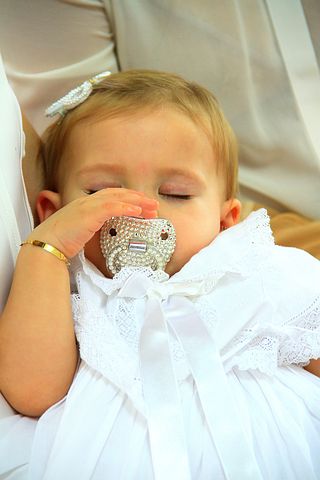
Sleep Training Baby with Pacifier
Any parent considering sleep training their baby should first understand that there’s a lot that goes into context with this process. And because here you are combining sleep training with the Pacifier, it’s good to understand if this sleeping aid will either help you in the process or not.
Sleep training your baby with a pacifier is possible as long as the appropriate steps and safety measures are followed. Note that there are many people against the idea of using pacifiers in sleep training.
This is understandable since they also come with the aspect of high-dependency where your baby might only fall asleep when they have the Pacifier. But if your baby sleeps better with a pacifier, it wouldn’t be a bad idea to launch sleep training while they are still on it.
However, safety should be your primary concern when sleep training a baby who still uses a pacifier. You’ll need to decide whether you will add or subtract pacifiers in your baby’s crib during training.
The following factors are essential to consider when sleep training your baby with a pacifier.
1. If your baby sucks the Pacifier safely
With this first consideration, you’ll have to ascertain if your baby indeed sucks on the Pacifier the right way when they are awake or asleep. If not, you might want to eliminate it from the sleep training program because it can hinder them from progressing.
- The Pacifier’s Size
When sleeping, your baby can move around a lot, which means they can quickly lose a pacifier if it isn’t the right size. Therefore, you’ll need to find the appropriate pacifier size for your baby to avoid sleep training disturbance once they are asleep.
- The Number of Pacifiers Needed
Because they are babies, it would be hard for them to put back their pacifiers when they fall out during sleeping. Moreover, finding one Pacifier in a dark nursery wouldn’t be something easy for your 4-9-month-old baby.
So, you’ll then be required to add some more pacifiers to their crib. You’ll do this hoping that your baby finds one Pacifier while scrambling to find the one that fell out.
But be very cautious about the number of pacifiers you place on your baby’s crib. You should be very strategic so that they don’t end up being hazards to your baby’s well-being.
- How long will your baby need the Pacifier?
As you may know, pacifiers are great sleeping aids. But like anything else, too much of its use will cause your baby a problem.
Therefore, you need to ascertain how long you want your baby to rely on the Pacifier. It might seem like a great addition to the sleep training program, but too much of it will indeed render the program meaningless.
Remember, the main aim of a sleep training program is so that your baby can sleep soundly without needing your help. And if they end up substituting you for the Pacifier, they might only be able to sleep with it in their mouth.
So, make sure that you plan to slowly eliminate it from the program and give them more space to put themselves to sleep.
- How you’ll eliminate the Pacifier
After planning how long you think your baby needs the Pacifier, eliminating it from their sleep training program is the next step. This can be done suddenly, and you’ll have to employ some expert knowledge in this move.
Here, you can use the Pantley Pull-Off method invented by Elizabeth Pantley. This method requires you to eliminate the Pacifier for several nights.
According to this method, you should remove the Pacifier from your baby’s mouth when they are on the brink of falling asleep on the first night. The second night demands that you gently pull the Pacifier before your baby falls asleep.
Lastly, remove the Pacifier on the third night when your baby is still tired but not asleep. You are to repeat these steps until your little one no longer needs a pacifier to sleep.
This is a too gradual process that requires utmost patience because it can even last for weeks.
How to Keep Pacifier in Baby’s Mouth at Night
Keeping a pacifier in your baby’s mouth doesn’t only depend on their ability to do so. You also have a significant role to play in ensuring that your baby safely keeps a pacifier in their mouth while sleeping.
Below are some helpful tips that you can use on your baby to make sure they keep the Pacifier in their mouth at night.
• Train them to use a pacifier appropriately.
• Assign the appropriate pacifier type and size for your baby
• Teach your baby how to put in their Pacifier by themselves
• If you must, only use a safe and proper tether
The first tip is easily achievable since babies are already natural suckers as a way of soothing themselves. Additionally, you’ll need to choose the right size of the Pacifier for your baby, depending on their age.
When you adhere to the above information appropriately, you’ll find that training your baby to keep their Pacifier in the mouth at night isn’t too hard of a job. It’s better than waking up after some hours and putting the binky back in their mouth.
How to Wean Baby off Pacifier in 4 Months
The best time for your baby to stop using the Pacifier is around 4-5 months old. At this age, babies don’t remember the most, making it easier for them to forget about the Pacifier.
Here are some tips to help you wean your baby off the Pacifier in 4 months:
- Give them enough sleep cues
If your baby is addicted to a pacifier, it’s apparent that they won’t sleep well without it. Therefore, the only way to effectively wean off their Pacifier is to give them as many sleep cues as possible.
Such sleep cues include a dark room, adequate white noise, and a consistent bedtime routine. This will go a long way in ensuring that they rely on their Pacifier to sleep.
- Cut down pacifier use
This might seem impractical to many parents since the Pacifier is what mostly keeps their little ones calm. To ditch the Pacifier altogether you’ll need to cut down on its use, especially during the day.
You can start doing this with small windows substituting pacifier use with music, going outside, and playing. This makes them forget about the Pacifier, and you’ll need to gradually increase such windows for them to forget about ever using the Pacifier again wholly.
Gradual Pacifier Weaning Techniques
Parents might prefer to gradually wean their baby off the pacifier rather than going cold turkey. Explaining step-by-step weaning techniques, like reducing pacifier use during specific times of the day or night, can make the process smoother for both the baby and the parents. Gradual weaning gives the baby time to adjust to falling asleep without the pacifier slowly.
Sleep Regression After Taking Away Pacifier
Sleep regression is a common concern for parents when they decide to take away the pacifier from their baby’s sleep routine. Understanding the potential challenges and tips to handle sleep regression during this transition can be very helpful. During sleep regression, babies might experience disrupted sleep patterns and increased night waking, which can be challenging for both parents and baby.
Alternative Soothing Techniques for Baby
While pacifiers are popular soothing aids, it’s essential to explore other techniques that can help calm and comfort your baby. Highlighting different methods like gentle rocking, baby massage, or offering a lovey (soft security blanket or stuffed toy) can provide parents with a range of soothing options to try out if they choose to wean their baby off the pacifier.
Nighttime Strategies for Pacifier Use
For parents who decide to continue using the pacifier during sleep, providing tips on how to manage the pacifier during the night can be beneficial. This includes using a pacifier tether to prevent it from getting lost, selecting a pacifier type that stays in the baby’s mouth more securely, and ensuring a safe sleep environment to minimize any potential hazards.
Understanding Comfort Nursing and Pacifier Use
Helping parents understand the difference between comfort nursing (breastfeeding for soothing purposes) and pacifier use can be valuable. While pacifiers can offer comfort, some babies may rely on breastfeeding for soothing more than others. Knowing how to balance these two methods and when to introduce alternatives can support better sleep routines for the baby and create a more peaceful bedtime experience.
Coping with Baby’s Nighttime Waking for Pacifier
When babies wake up looking for their pacifiers during the night, parents may wonder how to handle this situation without compromising their baby’s sleep. Offering tips on how to comfort the baby back to sleep without immediately giving the pacifier can empower parents to encourage self-soothing and better sleep habits.
Encouraging Independent Sleep
Emphasizing the importance of fostering independent sleep skills can be valuable for new parents. Providing guidance on creating a consistent bedtime routine, implementing soothing strategies, and encouraging self-soothing techniques without relying solely on the pacifier can contribute to a smoother sleep transition for the baby and more restful nights for parents.
Conclusion
As you’ve seen, knowing how to get a baby to sleep without Pacifier is a process that entails quite a lot. However, this is a doable practice that both you and your baby can benefit a lot from.
No parent wants to wake up every hour in the night to put the Pacifier in their baby’s mouth. Understandably, it’s tiring and decreases your rest time, which will eventually affect your productivity when you are awake.
This guide should’ve helped you learn how to get your baby to quit the Pacifier and sleep better. This way, both of you have enough time to rest your muscles, mind, and bodies before the next day begins.

